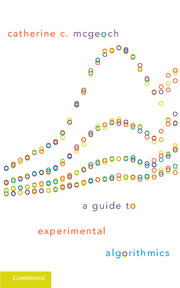4 - Tuning Algorithms, Tuning Code
Published online by Cambridge University Press: 05 February 2012
Summary
In almost every computation a great variety of arrangements for the succession of the processes is possible, and various considerations must influence the selection amongst them for the purposes of a Calculating Engine. One essential object is to choose that arrangement which shall tend to reduce to a minimum the time necessary for completing the calculation.
Ada Byron, Memoir on the Analytic Engine, 1843This chapter considers an essential question raised by Lady Byron in her famous memoir: How to make it run faster?
This question can be addressed at all levels of the algorithm design hierarchy sketched in Figure 1.1 of Chapter 1, including systems, algorithms, code, and hardware. Here we focus on tuning techniques that lie between the algorithm design and hardware levels. We start with the assumption that the system analysis and abstract algorithm design work has already taken place, and that a basic implementation of an algorithm with good asymptotic performance is in hand. The tuning techniques in this chapter are meant to improve upon the abstract design work, not replace it.
Tuning exploits the gaps between practical experience and the simplifying assumptions necessary to theory, by focusing on constant factors instead of asymptotics, secondary instead of dominant costs, and performance on “typical” inputs rather than theoretical classes. Many of the ideas presented here are known in the folklore under the general rubric of “code tuning.”
- Type
- Chapter
- Information
- A Guide to Experimental Algorithmics , pp. 98 - 151Publisher: Cambridge University PressPrint publication year: 2012



